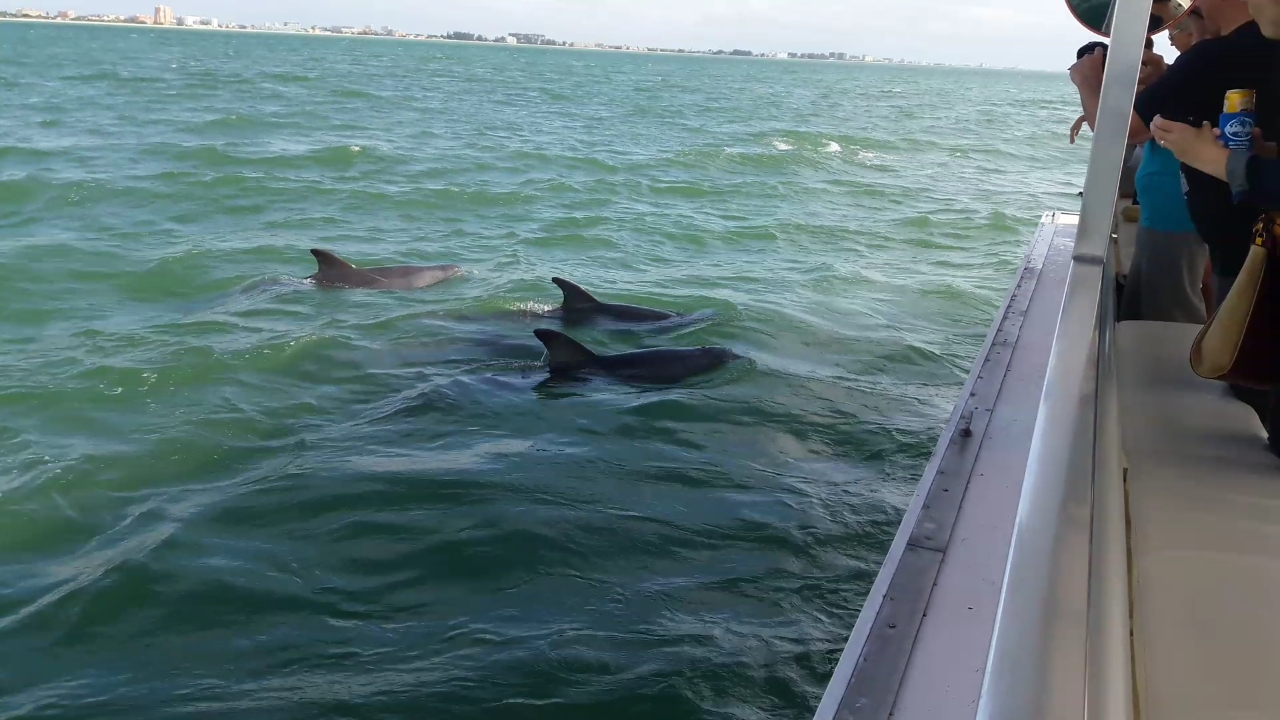It’s time for Mothers and their Babies
As the warm breezes of spring sweep over the tranquil waters of Boca Ciega Bay, a remarkable event unfolds beneath the surface: baby dolphin season. This annual phenomenon marks the arrival of newborn calves, frolicking alongside their doting mothers in the shimmering Gulf waters. Let’s delve into the enchanting world of mothers and babies in Boca Ciega Bay and share moments of joy, tenderness, and discovery.
The Magic of Baby Dolphin Season
Each year, as the waters of Boca Ciega Bay come alive with the vibrant hues of spring, something truly magical occurs. Pregnant dolphins give birth to their young in these sheltered waters, creating a nursery for the next generation of marine life. From playful leaps to gentle nudges, the bay becomes a stage for the tender bond between mothers and their newborn calves.
Boca Ciega Bay boasts a rich ecosystem that supports a diverse array of species. But it’s during baby dolphin season that the bay truly comes alive with the sights and sounds of new life. Mothers guide their tiny calves through the gentle waves, teaching them the ways of the sea and ensuring their safety in this watery world.
After a pregnancy of 12 months, Boca Ciega Bay baby dolphin season is typically between May and August. Births are most frequent here in June. Born tail first, the babies are approximately 3 ½ feet long, and weigh between 22 and 44 pounds.
The calves’ skin is darker than the adults’ for the first few weeks until its protective birth skin is shed and the calves’ lifelong hue of gray appears.
Did you know that newborn calves have stripes? These stripes are a result of the baby being bent in the shape of the letter C in its mother’s womb. These stripes are called fetal folds and locally take 6-8 weeks to fade. Researchers track the time the stripes take to fade to gauge the newborn’s health and well-being. During this time, the newborn dolphin learns to swim, which takes about 3 months to really master.
Yes, that’s right. Dolphin babies must learn to swim like our human infants must learn to walk!
Witnessing the Wonder of Dolphin Season
For visitors and locals alike, witnessing baby dolphins in Boca Ciega Bay is an unforgettable experience. From the vantage point on board the Dolphin Quest, you can observe these graceful creatures as they swim, play, and nurse their young. Keep your eyes peeled for the telltale signs of a dolphin pod: dorsal fins breaking the surface, playful splashes, and the occasional leap into the air. During this time of the year, calves love to play with the pod.
Protecting Our Precious Marine Life
While baby dolphin season is a time of celebration, it’s also a reminder of the importance of conservation efforts to protect our precious marine life. Pollution, habitat destruction, and human interference pose significant threats to dolphins and other marine species. By practicing responsible boating, reducing plastic waste, and supporting local conservation efforts, we can help ensure that future generations will continue to marvel at the beauty of baby dolphins in Boca Ciega Bay.
Embracing the Spirit of Discovery
Baby dolphin season in Boca Ciega Bay offers a glimpse into the awe-inspiring world of marine life, where mothers and babies navigate the waters together with grace and resilience. Whether you’re a seasoned observer or a first-time visitor, there’s no denying the magic of witnessing these majestic creatures in their natural habitat.
Aboard the Dolphin Quest, we have been treated with seeing baby dolphins every year. Tours depart daily from John’s Pass Village & Boardwalk in Madeira Beach, Florida. For cruise schedule, visit www.boattoursjohnspass.com.
Don’t miss out! Subscribe to our Youtube Channel for more amazing dolphin encounters: https://www.youtube.com/channel/UCbWHP5vyN-CD2tpkt6hgk2g








